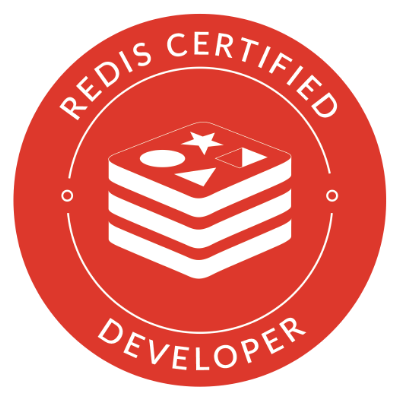Introduction
Year after year, the intake for either freshers or experienced in the fields dealing with Data Science, AI/ML, and Data Engineering has been increasing rapidly. Besides different programming language skills and AI/ML skills, recruiters are always on the hunt for more knowledgeable workers with an idea of as many databases as possible. And one such database is Redis, a popular NoSQL database.
Redis is a widely used in-memory database that acts like a cache or database and message broker. It is used in areas requiring low latencies, like reading real-time data or performing analysis on real-time data. Redis allows users to store data in different formats through its different data types like strings, hashes, geospatial indexes, and much more. Redis allows you to increase its Data Structures by loading different Redis Modules.
Knowing Redis interview questions is essential when applying for jobs in the fields of Data Science, Data Engineering, and Database. Redis is employed in many companies all over the world. Popular companies like Netflix, Pinterest, Uber, Airbnb, Swiggy, etc., use Redis as their secondary database or cache. If you’re new to Redis, this article can help you prepare for your following job interview by listing common Redis Interview Questions and answers.

Source: commons.wikimedia.org
Learning Objectives
- To learn Redis interview questions for the first interview.
- To gain an overall understanding of what Redis is and its use cases.
- To become familiar with the strengths as well as limitations of Redis.
- To understand the common Data Structures that Redis support.
- To know how data persistence takes place in Redis.
- Identify different Redis Modules.
This article was published as a part of the Data Science Blogathon.
Table of Contents
- What is Redis, and why is it used?
- How is Redis different from other NoSQL databases?
- What all Data Structures Does Redis Support?
- What are Redis Streams, and Where can you Use Them?
- What is the Difference Between DEL and UNLINK in Redis?
- Explain Pipelining in Redis.
- What Are the Different Modules Available in Redis?
- How is Pub/Sub Different From Streams in Redis?
- What are the Range Commands Used for Sorted Sets(SS)?
- What is an Eviction in Redis, and Name the Different Eviction Policies?
- How does Persistence Work in Redis?
- Explain Sharding in Redis.
- Redis Developer Certification – A Step Ahead
- Conclusion
.png)
Source: commons.wikimedia
Q1. What is Redis, and Why is it Used?
Answer: Redis is a free, open-source in-memory database server that can act like a cache, database, or message broker. It is quick, efficient, and capable of handling massive amounts of data, making it a popular choice for several applications like session management, real-time analytics, leaderboards, and message queuing.
Q2. How is Redis Different From Other NoSQL Databases?
Answer: Redis is a NoSQL database that differs from many of them. Firstly, Redis is an in-memory database that stores data in memory instead of other databases that store data on disk. Also, Redis supports several data types for different use cases. Unlike other NoSQL databases, Redis is designed for high performance due to its in-memory nature. Redis supports master-slave replication, allowing for easy horizontal scaling and handling increasing data volumes and traffic volumes.
Q3. What all Data Structures Does Redis Support?
Answer: Redis supports a wide variety of data types. They include hashes, lists, strings, sets, streams, geospatial indexes, bitfields, sorted sets, bitmaps, and hyperloglogs. These different Data Structures in Redis are used in different scenarios, from queuing to caching to event processing. These Data Structures store the data and retrieve it in unique ways.
Q4. What are Redis Streams, and Where can you Use Them?
Q5. What is the Difference Between DEL and UNLINK in Redis?
Q6. Explain Pipelining in Redis.
Q7. What Are the Different Modules Available in Redis?
-
RedisJSON: This module is used with Redis when JSON data type needs to be stored in Redis. It even allows you to update JSON data in Redis
-
RediSearch: By default, Redis doesn’t support indexing like other Relational Databases. The RediSearch module with Redis allows you to perform querying and secondary indexing and even provides a full-text search.
-
RedisTimeSeries: This module extends Redis to allow saving time series in Redis. It supports saving multiple time series. It has features like aggregating data, taking a maximum, and many more.
-
RedisGraph: It is a graph database that is built on top of Redis.
-
RedisBloom: It consists of a set of probabilistic Data Structures. Four of them include the cuckoo filter, bloom filter, top-k, and count-min sketch.
-
RedisGears: It is an engine that can be programmed by different programming languages like Python, and JS, to perform data processing in Redis itself.
-
RedisAI: is a module useful for storing features in machine learning or deep learning development.
Q8. How is Pub/Sub Different From Streams in Redis?
Q9. What are the Range Commands Used for Sorted Sets(SS)?
-
ZRANGE: It is used to get a range of members in a SS with low to high scores.
-
ZREVRANGE: Similar to ZRANGE but returns the members in a reverse SS order, with high to low scores.
-
ZRANGEBYSCORE: Gets all the members in a SS by order of their scores.
-
ZREVRANGEBYSCORE: Similar to the ZRANGEBYSCORE, but returns the members in a reverse SS order.
-
ZRANGEBYLEX: Gets all the members in a SS by lexicographical range.
-
ZREVRANGEBYLEX: Similar to the ZRANGEBYLEX, but returns the members in a reverse SS order.
Q10. What is an Eviction in Redis, and Name the Different Eviction Policies?
Q11. How does Persistence Work in Redis?
-
No Persistence: This option is selected when you do not want to persist data. This option is used when Redis acts like a cache instead of a database.
-
RDB (Redis Database): At predetermined intervals, RDB persistence creates point-in-time snapshots of your dataset. These are stored as .rdb files. It maximizes the Redis performance but has low durability compared to AOF.
-
AOF (Append Only File): AOF persistence option is used when you want to log every write operation that the client sends to the server. Every time the system starts up, it goes through this log, thus recreating the entire dataset. It is highly durable compared to RDB but affects the performance of Redis.
Q12. Explain Sharding in Redis.
Answer: Sharding is the process of breaking a large dataset into small chunks. These chunks are known as shards, and the processing is known as sharding. Sharding is done when you want to scale Redis horizontally. Sharding is performed based on the hash functions. Each key in Redis is assigned a hash, and this hash function is responsible for mapping these keys to a particular shard. This function ensures that all the keys are equally distributed among the shards.
Redis Developer Certification – A Step Ahead
Certificates are a great way to showcase your talent. These might also be really helpful when coming to the interview and preparing for Redis interview questions. Having a Redis Developer Certification boosts your confidence in Redis and gives you an advantage over others during your job interviews.

Redis Certified Developer Badge
Redis provides free courses on their Redis University website, which you can enroll in and then learn and clear accordingly at your own pace. After clearing these courses, you will be eligible for the Redis Developer Certification exam from Redis, which you can attempt free of cost. Upon clearing the exam, you will be awarded the certification. Clearing this certification exam ensures you have a solid foundation on the basics of Redis. This certification will greatly boost your knowledge of Redis and your confidence in the interviews and will put you a step ahead of your peers.
Conclusion
It is good practice to prepare for an interview to showcase your knowledge, be it a pro or a beginner in Redis. Going through these common Redis interview questions, you’ll be ready to show your understanding of Redis and its use cases. One must be good with the basics of Redis, like the Redis commands. Additionally, by being familiar with Redis Interview Questions, you’ll be able to show that you can handle a variety of data management and storage responsibilities, making you an invaluable asset. Having knowledge of at least one of the Redis clients can be handy.
The following are the key takeaways from this article:
- Redis interview questions help in acing your interview and bagging the job of your dreams.
- Redis is an in-memory database that stores data as key-value pairs.
- Redis Server supports a wide range of Data Structures.
- Redis is commonly employed when there is a need for real-time data collection/processing, session management, game leaderboards, etc.
- External modules can be loaded into Redis to create new Data Structures.
- Having a Redis Developer Certification will greatly boost your knowledge of Redis and confidence in your interviews.
The media shown in this article is not owned by Analytics Vidhya and is used at the Author’s discretion.





